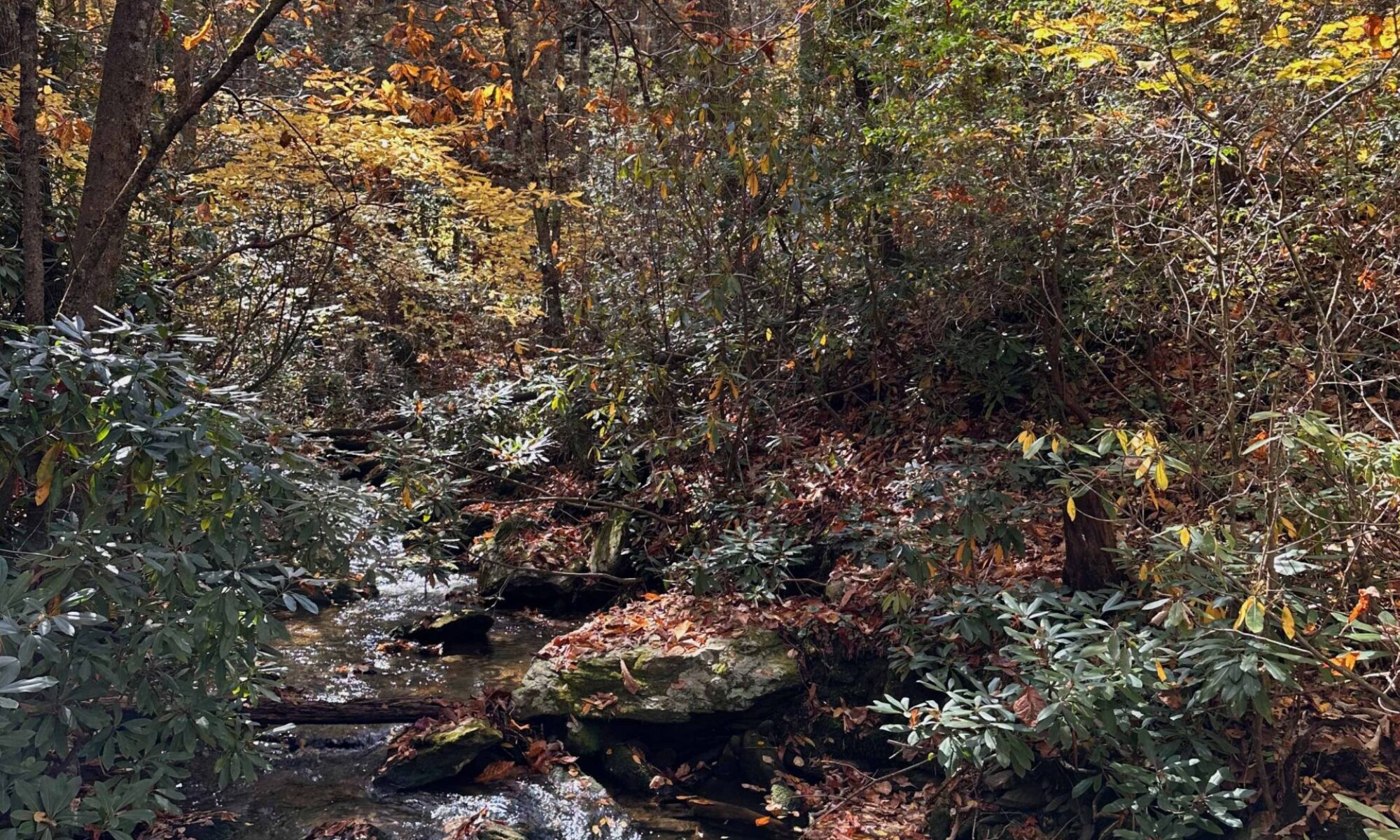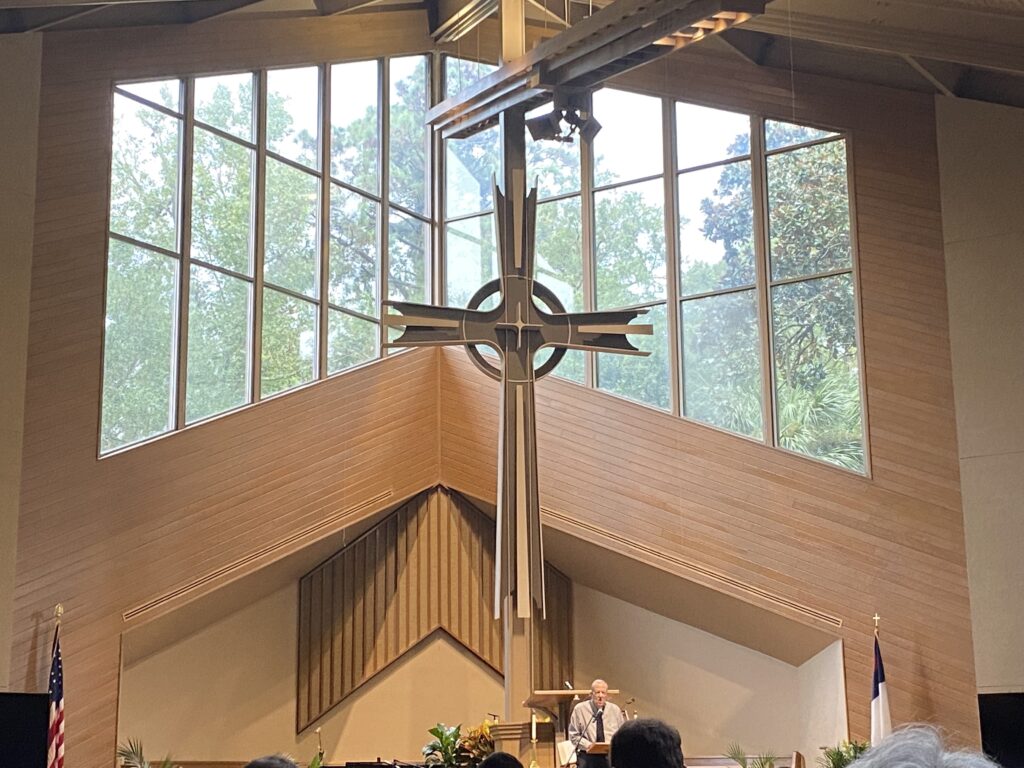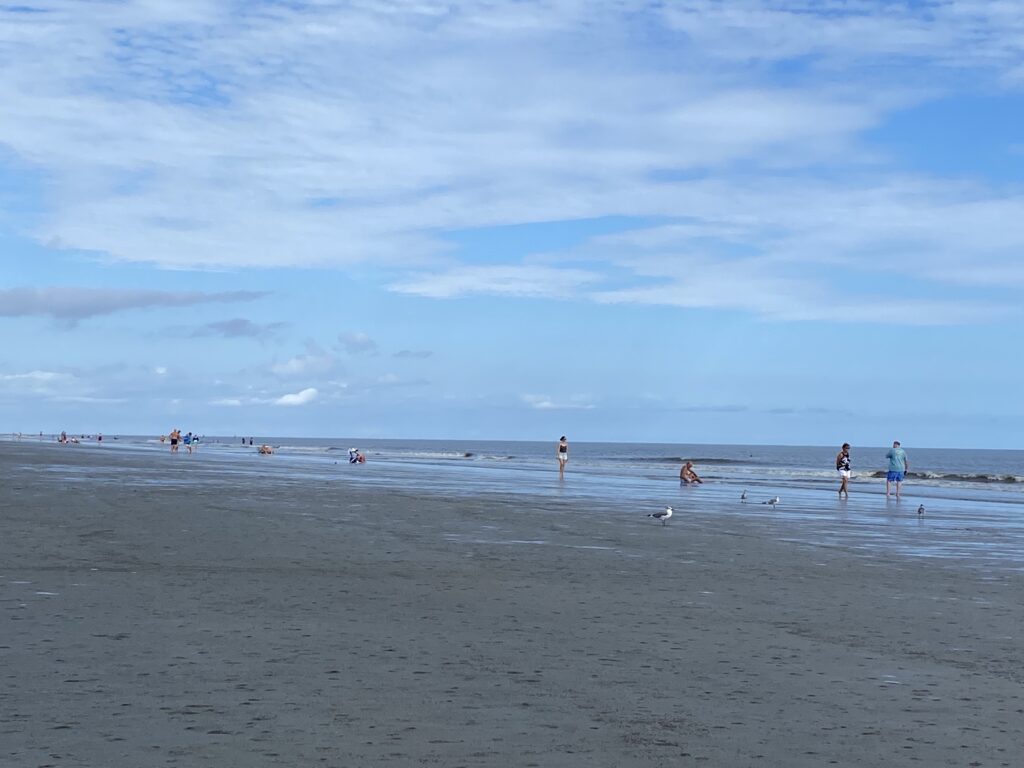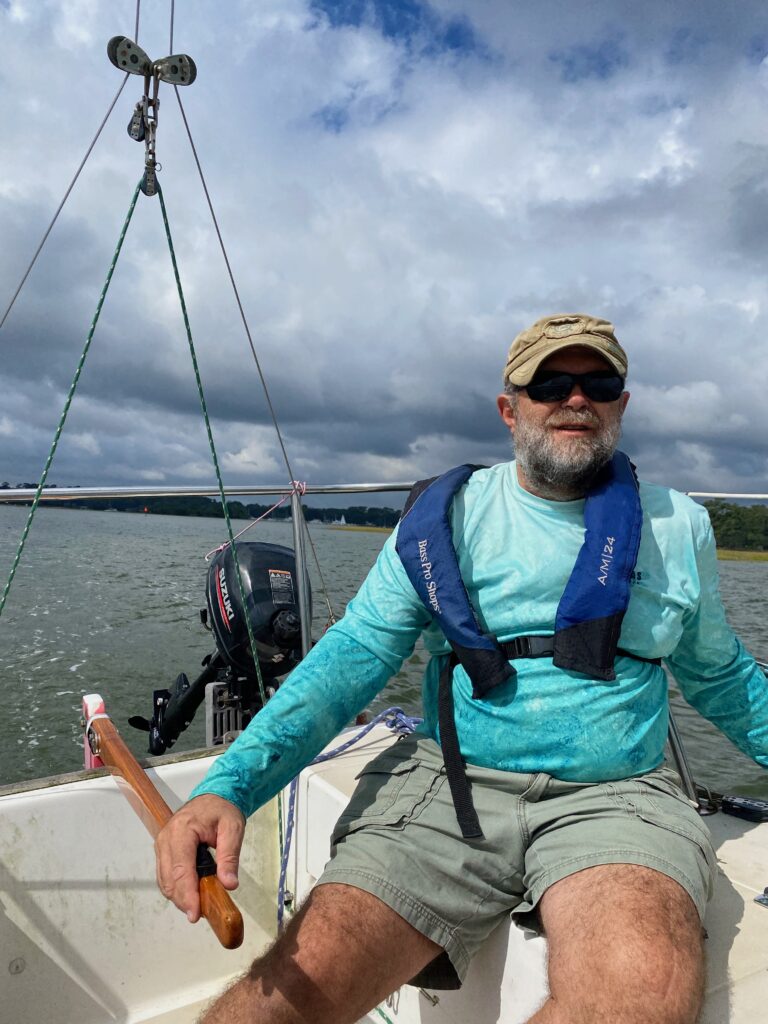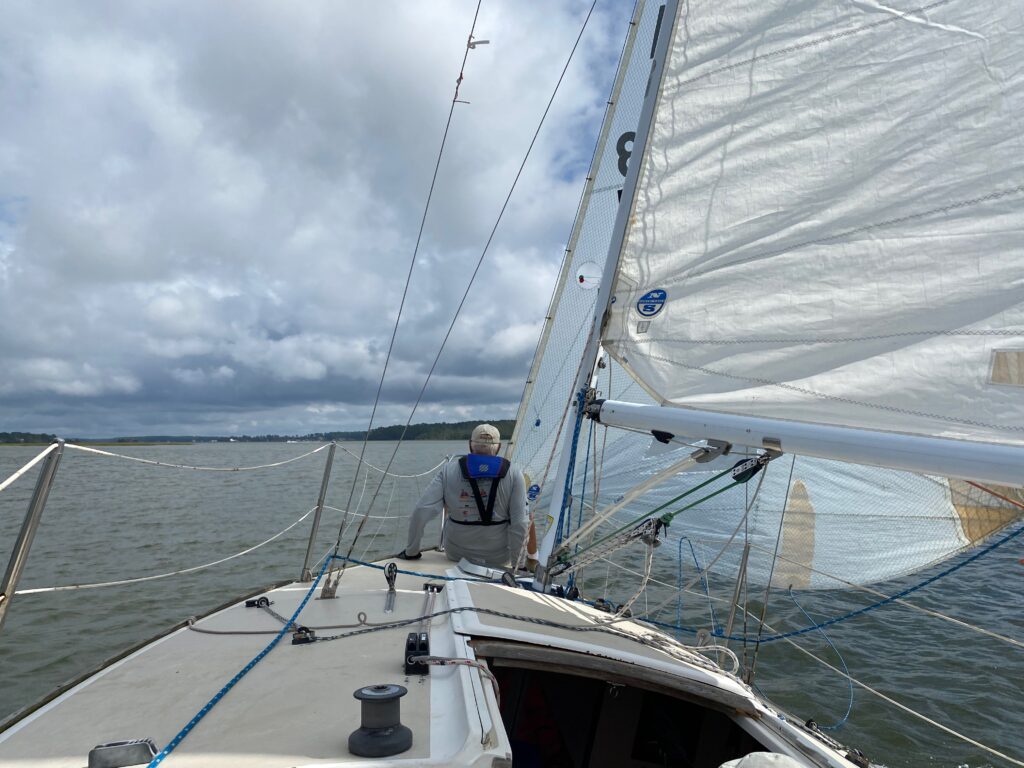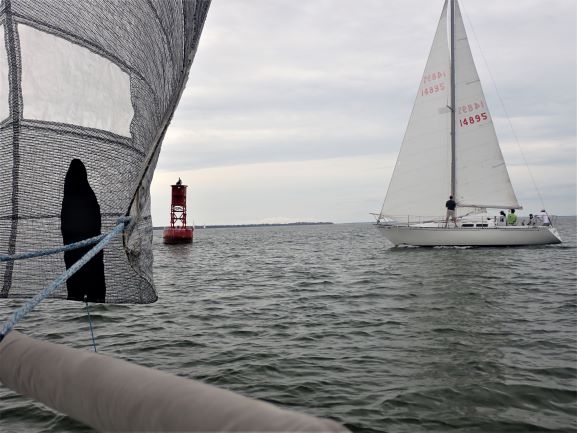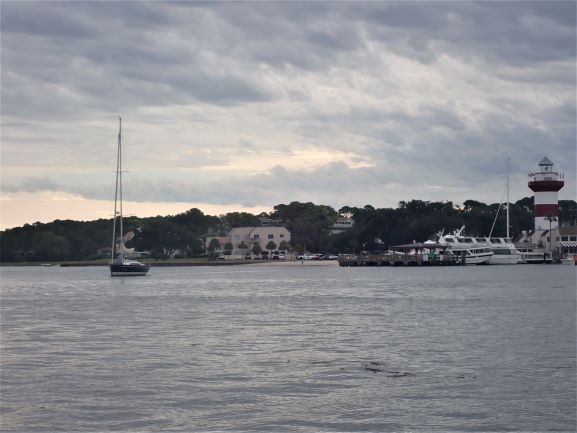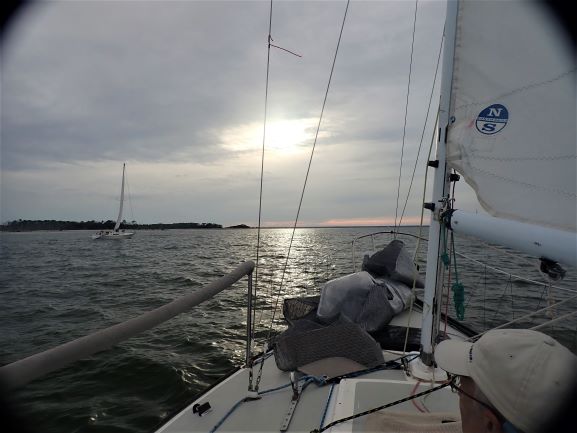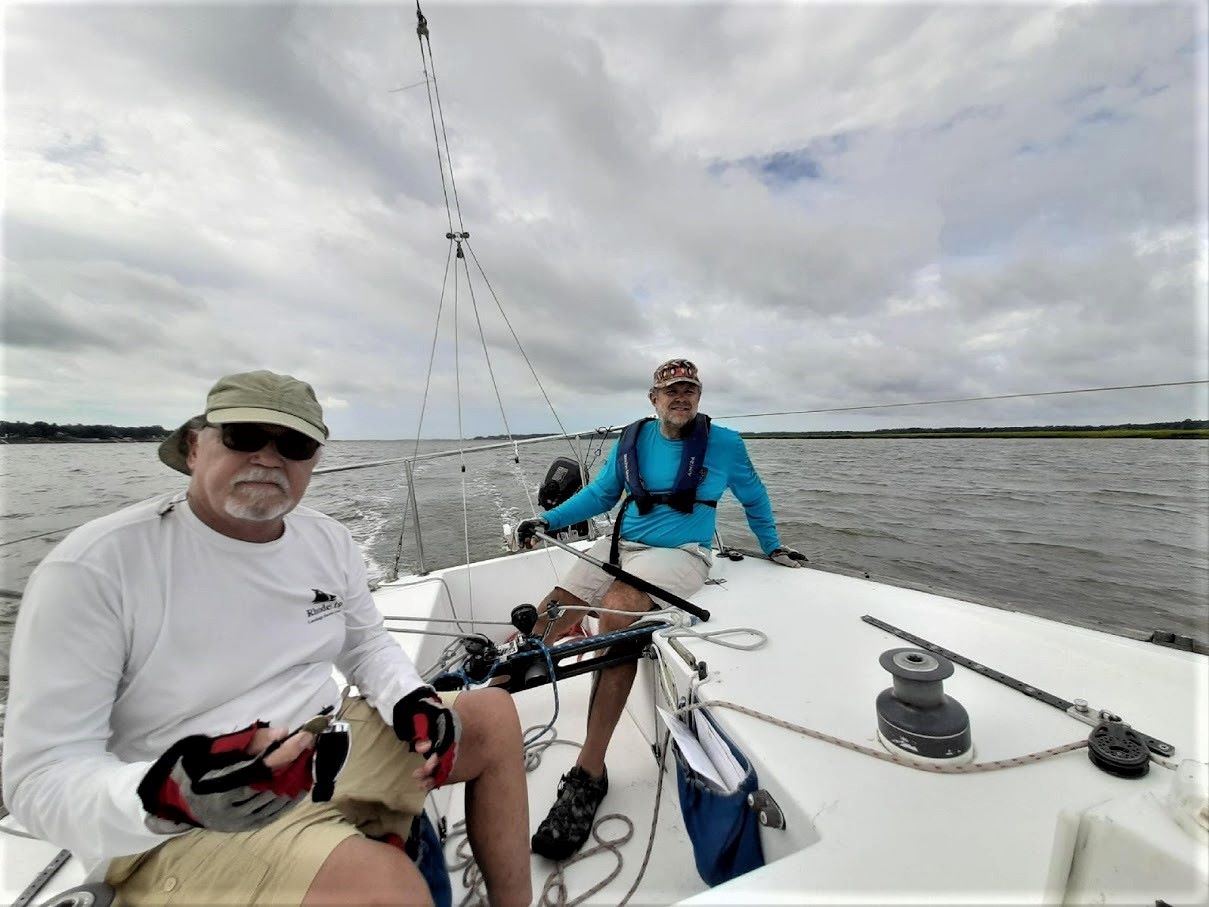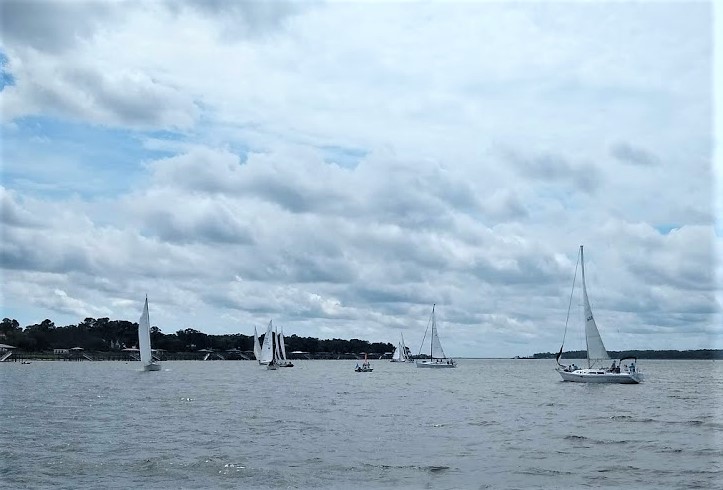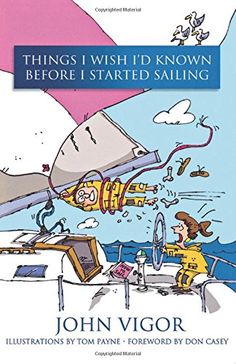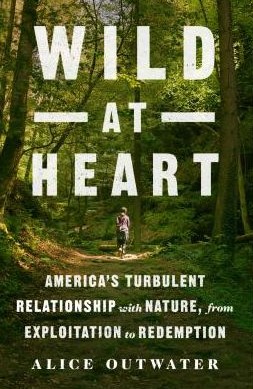Jeff Garrison
Bluemont and Mayberry Churches
July 3, 2022
Luke 8:22-25
At the beginning of worship:
I’m afraid the church, as an institution, along with our world, is heading for stormy waters. Some who claim to be a part of the church are doing outrageous things. From Christian nationalism to the extreme, a pastor in Texas preaching for the execution of gays. So much for love and grace and forgiveness and other Christ-like virtues. “Shoot them in the back of the head,” he suggested.[1] I don’t want to be a part of an organization like that, and hopefully neither do you.
Sadly, one outlier like him tends to taint all of us who strive to follow Jesus (not that I think he was following Jesus, but that’s another topic). Such renegades provide those outside the church with a reason to stay outside. In this series of sermons, I want to consider how to invite people into the church. We have work to do, to overcome such behavior which creates a negative view of the Church.
The challenge to today’s church
The amount of hate spewed toward the church and Christianity seems to be on the rise. When those outside the Church lump us all together, they miss the concept of the church as a place of love, acceptance, and grace. The church consists of people like us, who admit our sinfulness, and depend on the grace offered by Jesus Christ. Without his grace, we’d all be sailing into a storm without a rudder.
Being Christians
“We should not simply be known as Christians,” Ignatius told the church in the second century, “but really be Christians.”[2] That advice still holds true for today.
In this stormy time in which the world seems to be headed, we need to do a better job of conveying the love and grace of Jesus. We must show the world we care and accept one another with open arms. As we’re all in the same boat, we illustrate our trust in Jesus. We need to be good neighbors while modelling compassion and love. We don’t know how things will turn out, but we have faith that God is amongst us and in the end, everything will work out. But sometimes, when we are in the middle of a storm, it’s easy to lose sight of this, as we’re going to see in our Scripture for today.
The Savannah Sail Club often held late Wednesday afternoon regattas during the longer days of summer. A group of us from the Landings Sail Club would often sail with them. These were fun times. However, because of thunderstorms, such events were frequently cancelled.
Sailing in a Gal
Then there was this time. The day had been hot, and the wind squirrelly. The weather forecast suggested the storms popping up inland and moving north. This was often the case for the sea breeze would come in during the afternoon. The cool wind from over the ocean blows across the hot land, which generally kept the storms inland.
We were sailing out of the Skidaway River, on the second leg of the race, making for the marker at the Wilmington River where we were to head toward Wassaw Sound, before rounding a buoy and returning to the Savannah Yacht Marina on Wilmington Island. That’s when we realized the sea breeze wasn’t as strong as we thought as a storm moved quickly over us. We were hit with 45 mile an hour straight line winds, and it was all we could do to keep the boat upright.
Crewing on a Rhodes 19
I was part of a three-person crew on a Rhodes 19, a small racing dingy. All three of us climbed up on the high side of the boat, trying to balance it out. I controlled the jib sheets, letting the foresail out to spill wind. Chris took control of the main sheets from Ken and did the same. Ken, who was at the helm, pulled hard on the rudder to bring us into the wind, but it wasn’t much use. A boat heeled over that far means only a small part of the rudder is in the water. We struggled, as a torrent of rain accompanied the winds.
Right next to us, also heeled over, was a much larger boat with a mast a good 10 taller than ours. That boat was named “Lightning Rod.” It seemed a bad omen as lightning bolts began to pop around us. With the wind, the beating rain, lighting bolts instantly followed by the clamp of thunder, I thought we might perish. Sadly, we didn’t have Jesus physically on board to wake up and still the storm, but I can assure you, prayers were offered.
Prayers answered
Our prayers were answered and in a few minutes the wind died. The water that had been foaming became like glass. There was no wind, and the tide was running against us. We lost all headway, as the boat moved backwards.
It’s terrifying to be on a small boat in a gale. Thankfully, in the storm I described, the terrifying part only lasted maybe ten minutes, then there was bailing and checking gear to make sure nothing broke during the gale.
Sailing on mountain lakes
Sailing on mountain lakes, like Galilee, can even be more terrifying. The wind funnels down the mountain through ravines and pours out onto the water like the exhaust from a turbine. The interaction between the warm waters and the cool air from the hills creates unpredictable weather. Such a situation is challenging, even for seasoned sailors like half of the disciples who fished for a living.
Gillian’s Island Interlude
We could open this passage with the Legend of Gilligan’s Island:
Just sit right back and you’ll hear a tale
a tale of a fateful trip,
that started from this tropic port,
aboard this tiny ship.[3]
The area around Galilee was tropical. Located below sea level, the climate was moderate enough that crops could be grown most of the year. And the lake is only nine miles long, seven miles wide, so the disciples and Jesus aren’t planning to be gone too long. They push off from one side of the lake, expecting to arrive on the other in a few hours at the most. Just like with Gilligan, this should be no more than a three-hour cruise.
Jesus, who may be weary from teaching and preaching, decides to take a nap. He’ll let those seasoned boaters take him across the waters. Then the storm hits.
Sleeping through the storm
And Jesus sleeps soundly in the stern of the boat.
I’m sure Jesus sleeping irritated the disciples; after all, he suggested they all sail to the other side. And as they work to bail out the water, Jesus snores.
It appears they wake Jesus, not because they think he can help, but because they want him to know that they’re all doomed. Interestingly, Jesus gets up and rebukes the wind and the waves. Rebuke implies dealing with evil, and perhaps the storm was another of Satan’s attempts to do away with Jesus.[4] But Jesus’ words contain power.
Two questions
The storm dies and the boat floats on calm water, no longer in danger of capsizing. Then Jesus turns to the disciples and asks, “Where is your faith?” How do they answer such a question? We’re not told they did; instead, they ponder “just who is this guy that commands the wind and the sea, and they obey.”
While Jesus’ question reminds the disciples that they, like us, need to trust him, I think the disciples ask a more interesting question. “Who is Jesus?” It’s essentially the same question we saw asked a few weeks ago when Jesus forgave the sinful woman. Those at the table asked, “Who is this that can forgive sin?”[5] Neither question is answered. As James Edwards summarizes in his commentary on this text: “The right questions lead not to pat and ready answers, but to awe and wonder in the presence of Jesus.”[6]
The Edmund Fitzgerald
The ballad, “the Wreck of the Edmund Fitzgerald” has a haunting question. “Does anyone know where the love of God goes when the waves turn the minutes into hours. The disciples didn’t realize at this point in their ministry with Jesus that God was with them, in the stern.
What does faith mean at times like this
What does it mean to have faith during a storm? Does it mean that everything will be okay? Or are we left with the assurance that we are in God’s hands? And we can trust that no matter what happens, God is with us?
The Troubles of the world
It appears the church, our nation, and our world is sailing into stormy waters. The war in Ukraine causes untold amounts of devastation to that country while threatening the world’s food supply. In places like Ethiopia, you have war and famine. Religious unrest seems always to be simmering somewhere in the world, most lately in India and Sri Lanka. We seem to encounter one disease after another, from COVID variants to Monkeypox to the deadly Ebola virus which keeps popping up in sub-Sahara Africa. The distrust between the political parties in our own country, in which both seem more interested in their own power than the good of the whole, destroys the ability of working together.
Who do we trust?
As the storm clouds darken, who do we trust? That’s a question we all may be asking. And if not, we will be asking it. Do we look for a savior among politicians and diplomats and business leaders? Or do we look to the only Savior the world has known?
Back in the 90s, when people still used phone books, a group of churches in Cedar City, Utah, where I was pastor, created an ad that appeared on the back cover of Southern Utah University’s student and faculty directory. We got permission from the Jesus Film folks to use a still shot from that movie which depicted Jesus standing up in a boat during a gale and raising up his hands to calm the wind and sea. The caption read, “he calmed the sea, let him calm your hearts,” and then listed the churches who sponsored the ad.
Jesus calmed the seas, let him calm your hearts. I think that’s still good advice for today’s world. Amen.
[1] https://www.newsweek.com/pastor-gay-people-solution-killings-bible-1714037
[2] James R. Edwards, From Christ to Christianity: How the Jesus Movement Became the Church in Less than a Century (Grand Rapids: Baker Academic, 2021), 232. Edwards quotes Ignatius’ To the Magnesians, 4.
[3] https://www.songlyrics.com/gilligan-s-island/gilligans-theme-song-lyrics/
[4] Fred B. Craddock, Luke: Interpretation, A Biblical Commentary for Teaching and Preaching (Louisville: John Knox Press, 1990), 114.
[5][5] Luke 7:49. See https://fromarockyhillside.com/2022/06/all-are-in-need-of-forgiveness-the-seemingly-righteous-and-the-obvious-sinner/
[6] James R. Edwards, The Gospel According to Luke (Grand Rapids: Eerdmans, 2015), 247.

